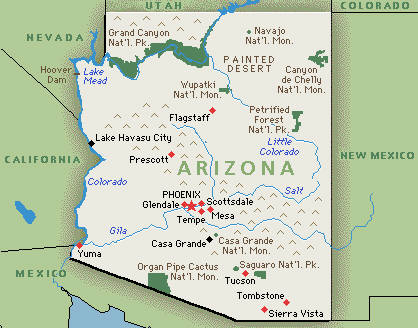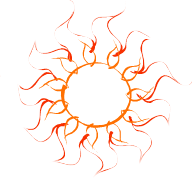Congratulations to two NASA Explorer Schools educators, Lanena Berry from the Houston Independent School District, in Houston, Texas, and Joan Labay-Marquez from Curington Elementary School in Boerne, Texas, who are two of seven recipients of the 2013 American Institute of Aeronautics and Astronautics Foundation Educator Achievement Award.
The AIAA Foundation presents the Educator Achievement Awards every two years to classroom teachers who have demonstrated exemplary efforts in exciting students in grades K–12 about the study of mathematics, science and related technical studies, and in preparing them to use and contribute to tomorrow’s technologies.
AIAA Executive Director and former NASA astronaut Sandra H. Magnus stated: “The seven educators selected to receive the 2013 AIAA Foundation Educator Achievement Award are a testament to how love of a subject coupled with inspiring teaching helps build the next generation of aerospace engineers and scientists. All it takes is a single spark, lit by an engaging teacher, to ignite the curiosity and interest of a student about the wonder and creativity resident in the world of science and engineering.”
Each winner will receive a trip to Washington, D.C., and will be honored at the AIAA Aerospace Spotlight Awards Gala on May 8, 2013.
The AIAA Foundation Educator Achievement Award has been presented to over 52 educators since 1997 and has become a sought-after honor in the education community.
For more information on the AIAA Foundation Educator Achievement Award, please contact Lisa Bacon or call 703-264-7527.
Link to the NASA Explorer Schools home page.

 Melody Shaw gave 700 fourth- and fifth-grade students an opportunity to put themselves in the shoes of NASA engineers. Shaw is a science lab teacher at Grenada Upper Elementary School in Grenada, Miss.
Melody Shaw gave 700 fourth- and fifth-grade students an opportunity to put themselves in the shoes of NASA engineers. Shaw is a science lab teacher at Grenada Upper Elementary School in Grenada, Miss. NASA Explorer Schools educator Kaci Heins and students from Arizona participated in a lesson based on the Mars Student Imaging Project. Her students studied geographic features on Earth and then used NASA photos to learn more about geographic features on Mars. Students applied skills such as measurement and how to document observations as well as reinforcing their understanding of latitude and longitude.
NASA Explorer Schools educator Kaci Heins and students from Arizona participated in a lesson based on the Mars Student Imaging Project. Her students studied geographic features on Earth and then used NASA photos to learn more about geographic features on Mars. Students applied skills such as measurement and how to document observations as well as reinforcing their understanding of latitude and longitude. Barrett’s NASA Save the Earth team won first prize in the Spaced Out Sports Challenge Contest! NASA contacted staff members Allyson Greene, Wendy Cohen, Laurie Sullivan, and Terry Bratt with the good news. Out of 57 entries nationwide, Barrett Elementary took first place in the contest. This accomplishment was the result of a huge team effort by all of the fifth-grade teachers, along with Renee Shaw’s wonderful filming and editing talents. The students worked very hard to design a fun, yet challenging sports-based game for astronauts on the International Space Station to play on an upcoming mission.
Barrett’s NASA Save the Earth team won first prize in the Spaced Out Sports Challenge Contest! NASA contacted staff members Allyson Greene, Wendy Cohen, Laurie Sullivan, and Terry Bratt with the good news. Out of 57 entries nationwide, Barrett Elementary took first place in the contest. This accomplishment was the result of a huge team effort by all of the fifth-grade teachers, along with Renee Shaw’s wonderful filming and editing talents. The students worked very hard to design a fun, yet challenging sports-based game for astronauts on the International Space Station to play on an upcoming mission.
 Richard Tabor, fourth-grade teacher, and Stephen Anderson, principal at Amerman Elementary School in Michigan, found a method encouraging fourth-grade students to think about multiple variables and stimulates their curiosity when an activity doesn’t come out as predicted. They introduced a “Solar Sprint” activity in which students design, test and race a solar-powered car built with LEGO bricks. They then presented one more challenge to their students: The winner of the Solar Sprint is not the fastest but, rather, the model that is most efficient, based on a ratio of speed to weight. The use of ratios simulates the actual work of scientists and engineers.
Richard Tabor, fourth-grade teacher, and Stephen Anderson, principal at Amerman Elementary School in Michigan, found a method encouraging fourth-grade students to think about multiple variables and stimulates their curiosity when an activity doesn’t come out as predicted. They introduced a “Solar Sprint” activity in which students design, test and race a solar-powered car built with LEGO bricks. They then presented one more challenge to their students: The winner of the Solar Sprint is not the fastest but, rather, the model that is most efficient, based on a ratio of speed to weight. The use of ratios simulates the actual work of scientists and engineers. NASA Explorer Schools educator Elizabeth Petry from Mack Benn Jr. Elementary School used NES resources to encourage her students to read and write. Students began their adventure by participating in a videoconference activity in which they explored the solar system. Afterward, students conducted research and prepared a fact to share about their planet as part of a Reader’s Theater activity. Petry showed the NASA Now program, “Reasons for the Seasons,” and arranged for students to participate in a NASA Digital Learning Network videoconference, Our Solar Neighborhood.
NASA Explorer Schools educator Elizabeth Petry from Mack Benn Jr. Elementary School used NES resources to encourage her students to read and write. Students began their adventure by participating in a videoconference activity in which they explored the solar system. Afterward, students conducted research and prepared a fact to share about their planet as part of a Reader’s Theater activity. Petry showed the NASA Now program, “Reasons for the Seasons,” and arranged for students to participate in a NASA Digital Learning Network videoconference, Our Solar Neighborhood. NASA Explorer Schools educator Elizabeth Petry from Mack Benn, Jr. Elementary School found NES resources helpful when preparing for the Virtual Student Symposium. Her fifth-grade students conducted an investigation using a teaching module, Fingerprints of Life, and the NASA Now program, Microbes at NASA. The students were able to perform their experiment, record the data, and analyze it within a manageable time period. They took one class period to experiment and record data, plus a second class period to analyze data and derive conclusions.
NASA Explorer Schools educator Elizabeth Petry from Mack Benn, Jr. Elementary School found NES resources helpful when preparing for the Virtual Student Symposium. Her fifth-grade students conducted an investigation using a teaching module, Fingerprints of Life, and the NASA Now program, Microbes at NASA. The students were able to perform their experiment, record the data, and analyze it within a manageable time period. They took one class period to experiment and record data, plus a second class period to analyze data and derive conclusions. NES Educators from Forest Lake Technology Magnet Elementary School and Forest Heights Elementary School participated in NASA Langley Research Center’s 3rd Annual STEM Conference in Charlotte, N.C. During the three-day conference. The educators attended breakout sessions where they learned about engineering design challenges, problem-based learning activities, distance-learning modules, inquiry-based lessons and other hands-on projects.
NES Educators from Forest Lake Technology Magnet Elementary School and Forest Heights Elementary School participated in NASA Langley Research Center’s 3rd Annual STEM Conference in Charlotte, N.C. During the three-day conference. The educators attended breakout sessions where they learned about engineering design challenges, problem-based learning activities, distance-learning modules, inquiry-based lessons and other hands-on projects.